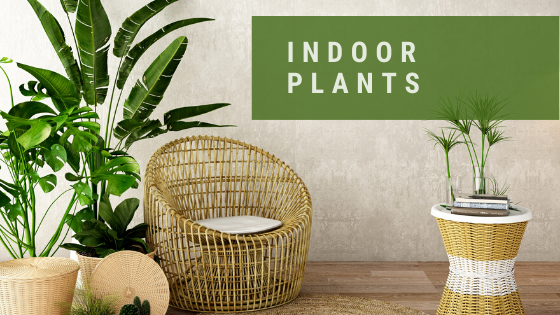No matter your décor, plants will add a certain energy and life to your home – and they’re an inexpensive way to add instant colour and style to any room.
Along with beautifying your home, plants help create a naturally calming and mood lifting indoor environment - the simple act of watering and caring for them helps you take time out to unwind and focus on life and nature. According to plantlifebalance.com.au, if you are looking to use plants to improve your household’s wellbeing
“The greater the mix of sizes and varietals, the greater the benefits.”
“JUST ONE PLANT CAN IMPROVE YOUR AIR 25%”
You may not realise it, but air-borne toxins can be created by several everyday items like paints, detergents, pesticides, carpet cleaner or fabrics which can cause headaches, irritations and allergies. Indoor plants remove pollutants like this from the air by absorbing these gases through pores on the surface of their leaves and through their roots.If you are looking for plants that have air cleaning benefits The Peace Lily, Aloe vera, Devils Ivy, Spider Plant or Parlour Palm are a great place to start.
Location. Location. Location.
Light is food for your plants so it is important to consider how much natural sunlight your plant needs and how much light your space can provide. In other words - when choosing a plant, start with the available light, not the plant species.
For a sunny window with lots on direct sunlight plants like aloe vera, succulents, hibiscus or palms thrive in direct sunlight 6 hours or more a day.
A space with filtered, dappled or medium light is typically the best environment for most indoor plants. Take care your plant doesn’t get too hot though, as their leaves may burn. A good indicator of too much sun can be brown spots on the leaves or browning leaf edges. With too little sunlight indicators include yellowing or wilting leaves or stunted growth.
Indirect or low light positions are typically away from a window where no direct or filtered light hits the plant during the day. Plants that can tolerate low light conditions include fig creeper, maidenhair fern or snake plant.
All plants need some form of sunlight so if you are looking to place a plant in a room that has no windows and is dark like an en-suite or walk-in robe you will need to rotate your plants to a room with indirect light regularly to help them get an adequate food source.
Our Warralily Community Garden Group, Armstrong Creek are on facebook and would love to hear your thoughts on indoor gardening over winter.

